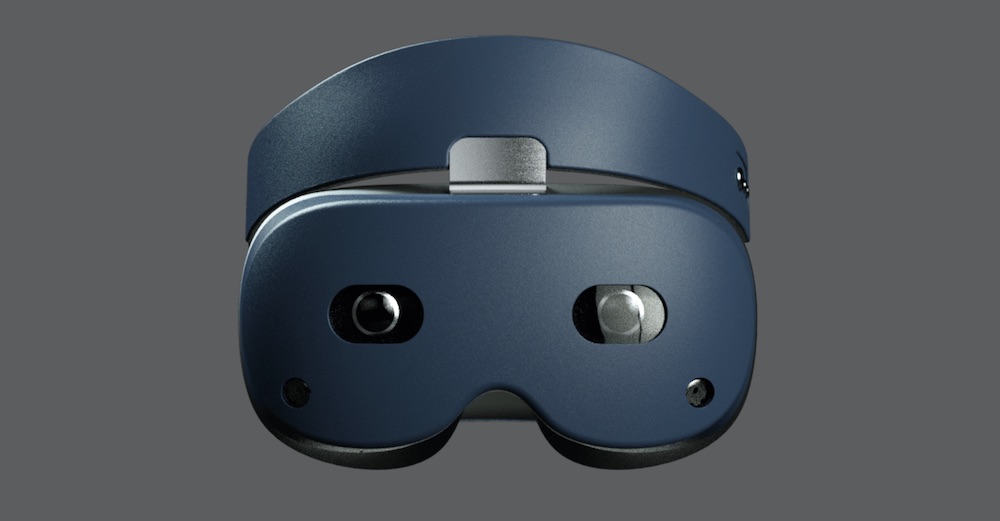Standalone Headset Manufacturer LYNX Raised $2 Million in 2019
The French XR startup LYNX, which participated in Qualcomm’s hardware accelerator program, raised $ 2million in 2019. The startup is using the Snapdragon XR2 chipset which is made for XR in its upcoming virtual reality headset. Its headset is targeting enterprise use-cases and will ship from this summer at a cost of $1500.

LYNX is developing a standalone Mixed Reality headset which is mainly focused on passthrough Augmented Reality scenario for enterprise applications. Its R-1 headset was unveiled earlier this month and the first of its units are expected to ship by the summer of this year for $1,500. Road to VR talked to the company’s founder Stan Larroque for more insights into the startup’s tech, background and ambitions.
LYNX Funding
Larroque told Road to VR that LYNX has raised $2 million as of last year. The company is currently engaged in talks with investors for its next funding round.
The company is still in its early startup stage and its $2 million funding is still a drop of what some of the major XR players have raised so far. But the amount is still significant. Oculus got its start via a Kickstarter funding campaign where it raised $2.4 million in 2012.
The $2 million raised will go towards creating an XR headset and the amount can go much farther at the moment than a few years ago because there is a lot of readily available hardware, supply chains as well as software. The company’s recently unveiled Lynx R-1 mixed reality headset uses Qualcomm’s Snapdragon XR2 chip. Lynx can also leverage a lot of marketing shortcuts that were not available just a few years back.
Software and Content
LYNX has leveraged Qualcomm’s hardware accelerator program as well as its XR SDK. Qualcomm currently provides support for partners with its hardware and software reference designs that serve as blueprints for startups such as Lynx which want to quickly take their hardware to the market.
The Qualcomm XR SDK has core functionality such as its inside-out headset tracking as well as an ability to run applications on the hardware without having to write a new application framework from scratch.
Larroque told Road to VR that its Lynx R-1 headset will run Android 10 and the startup will also supply an SDK built on a Qualcomm XR SDK. A Unity plugin will also be provided. The Lynx R-1 will also provide support for the OpenXR that will allow any developer tools or content that are built against the API to easily run on the R-1 headset.
It isn’t clear whether LYNX plans to run its own storefront given that its R-1 headset has an enterprise focus. The other alternative is to leave it to end users to acquire and load their own content within their own organizations as required. The R-1 headset could also enable tethering to PCs in order to run high-end immersive content that might be too heavy for R-1’s own standalone Snapdragon processor.
Lenses and Display
The Lynx R-1 has a unique lens that the company says cuts down on the distance between the user’s eyes and the display which allows for a more compact headset design than if LYNX had used a more conventional lens. LYNX boss Larroque has stated that its new Virtual Reality displays from JDI that are now being mass produced from this week.
The headset has “light folding” optics that enables it to “hide” the eye-tracking camera that has been directly positioned at the center of the lens. This enables the R-1 to have the best eye view that can results in the improvements in eye tracking accuracy over other approaches where the eyes are viewed from extreme angles.
The design of the R-1 is much more complex than has been seen so far in most of the other contemporary virtual reality headsets. The company admits that the design is hard although it is not hard to manufacture. The optics of the headset have been block-built through the use injection molding which is more affordable.
The Lynx R-1 lenses also have an optical supersampling; the resolution of the display is 1,600 x 1,600 but the image is split into four quadrants and subsequently reassembled in lens where portions of the image are overlapped. This improves the sharpness in these areas. This method does not entail rendering four individual views for every frame. The image is split appropriately in one draw-call using a shader.
Apart from its 1,600 x 1,600 technical resolution, the headset will also have a circular FOV of 90-degrees and 18-pixels per degree. Should its optical supersampling work as envisioned, the R-1 headset will have excellent clarity that will make it ideally suited for the enterprise use-cases.
The R-1 headset is slated to ship this summer for a price of $1,500. The headset is already available for pre-orders.
https://virtualrealitytimes.com/2020/02/22/standalone-headset-manufacturer-lynx-raised-2-million-in-2019/https://virtualrealitytimes.com/wp-content/uploads/2020/02/Lynx-R1-Mixed-Reality-Headset-600x313.jpghttps://virtualrealitytimes.com/wp-content/uploads/2020/02/Lynx-R1-Mixed-Reality-Headset-150x90.jpgBusinessHardwareVR HeadsetsThe French XR startup LYNX, which participated in Qualcomm’s hardware accelerator program, raised $ 2million in 2019. The startup is using the Snapdragon XR2 chipset which is made for XR in its upcoming virtual reality headset. Its headset is targeting enterprise use-cases and will ship from this summer at...Sam OchanjiSam Ochanji[email protected]EditorVirtual Reality Times - Metaverse & VR
